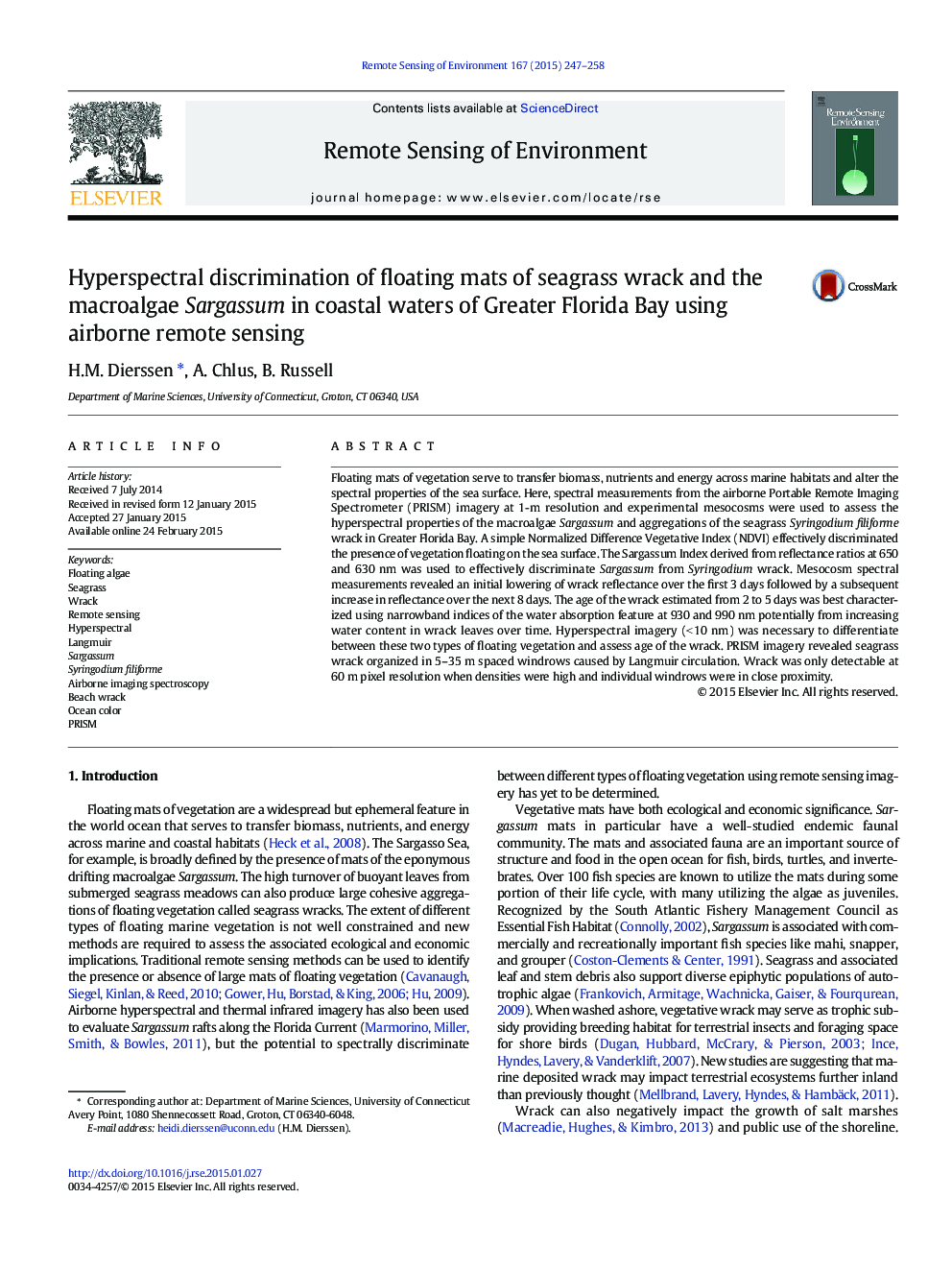| کد مقاله | کد نشریه | سال انتشار | مقاله انگلیسی | نسخه تمام متن |
|---|---|---|---|---|
| 6345895 | 1621233 | 2015 | 12 صفحه PDF | دانلود رایگان |

- Different types of floating vegetation can be assessed with hyperspectral imagery.
- Organized windrows of floating seagrass wrack revealed with airborne PRISM imagery.
- Sargassum Index effectively discriminated Sargassum from Syringodium wrack.
- Age of seagrass wrack could be assessed with increasing water absorption at 990Â nm.
Floating mats of vegetation serve to transfer biomass, nutrients and energy across marine habitats and alter the spectral properties of the sea surface. Here, spectral measurements from the airborne Portable Remote Imaging Spectrometer (PRISM) imagery at 1-m resolution and experimental mesocosms were used to assess the hyperspectral properties of the macroalgae Sargassum and aggregations of the seagrass Syringodium filiforme wrack in Greater Florida Bay. A simple Normalized Difference Vegetative Index (NDVI) effectively discriminated the presence of vegetation floating on the sea surface. The Sargassum Index derived from reflectance ratios at 650 and 630 nm was used to effectively discriminate Sargassum from Syringodium wrack. Mesocosm spectral measurements revealed an initial lowering of wrack reflectance over the first 3 days followed by a subsequent increase in reflectance over the next 8 days. The age of the wrack estimated from 2 to 5 days was best characterized using narrowband indices of the water absorption feature at 930 and 990 nm potentially from increasing water content in wrack leaves over time. Hyperspectral imagery (< 10 nm) was necessary to differentiate between these two types of floating vegetation and assess age of the wrack. PRISM imagery revealed seagrass wrack organized in 5-35 m spaced windrows caused by Langmuir circulation. Wrack was only detectable at 60 m pixel resolution when densities were high and individual windrows were in close proximity.
Journal: Remote Sensing of Environment - Volume 167, 15 September 2015, Pages 247-258